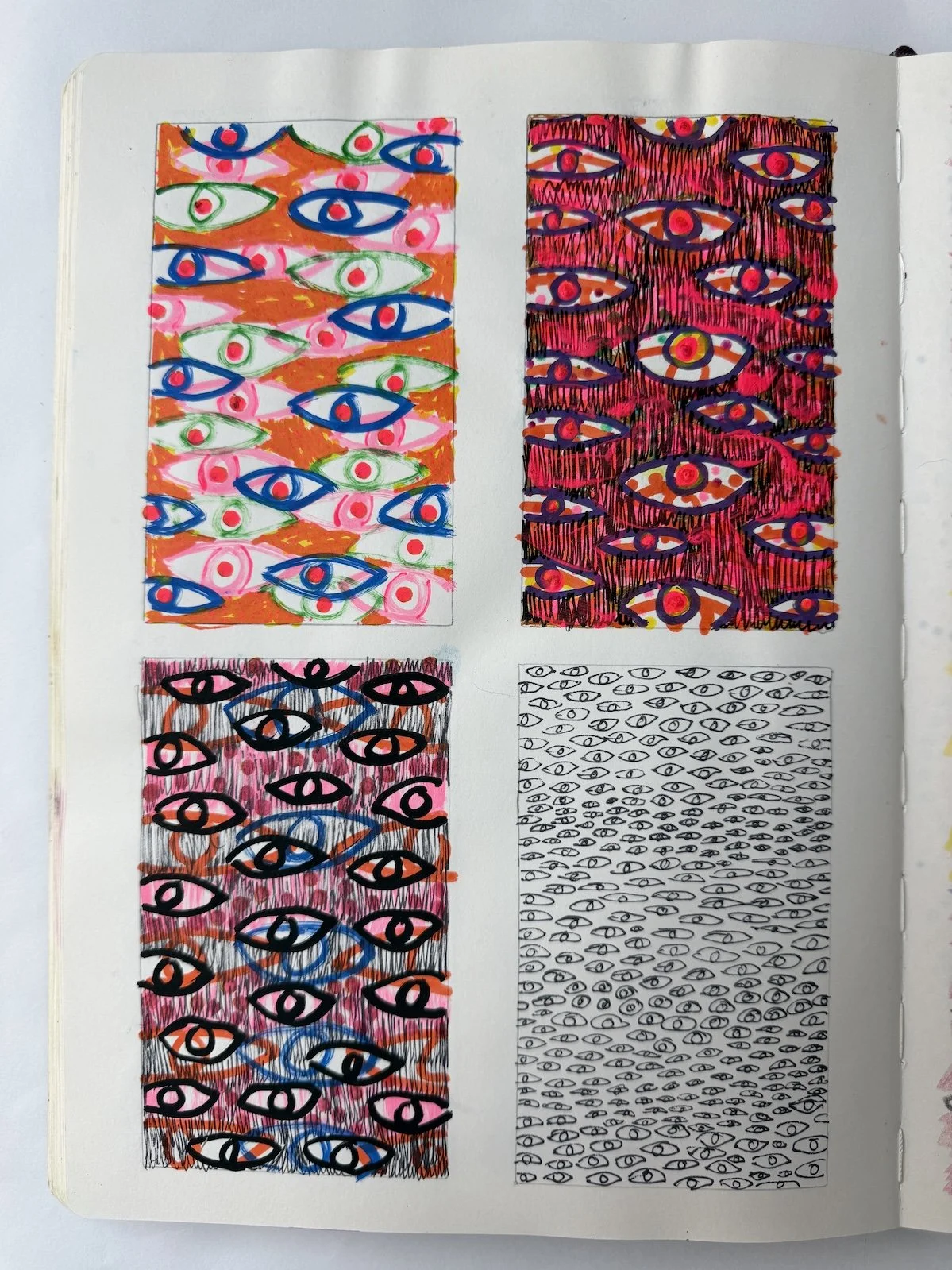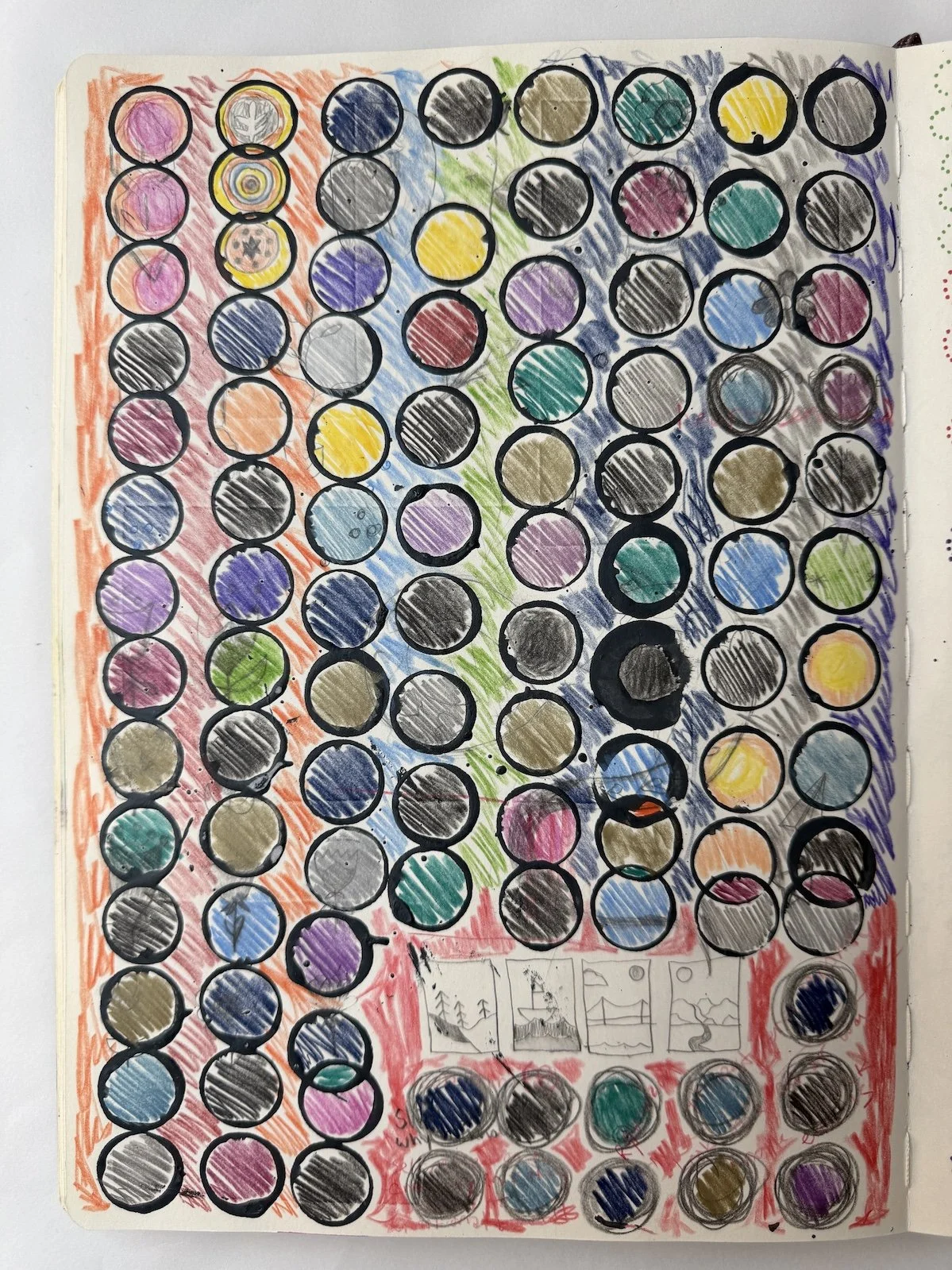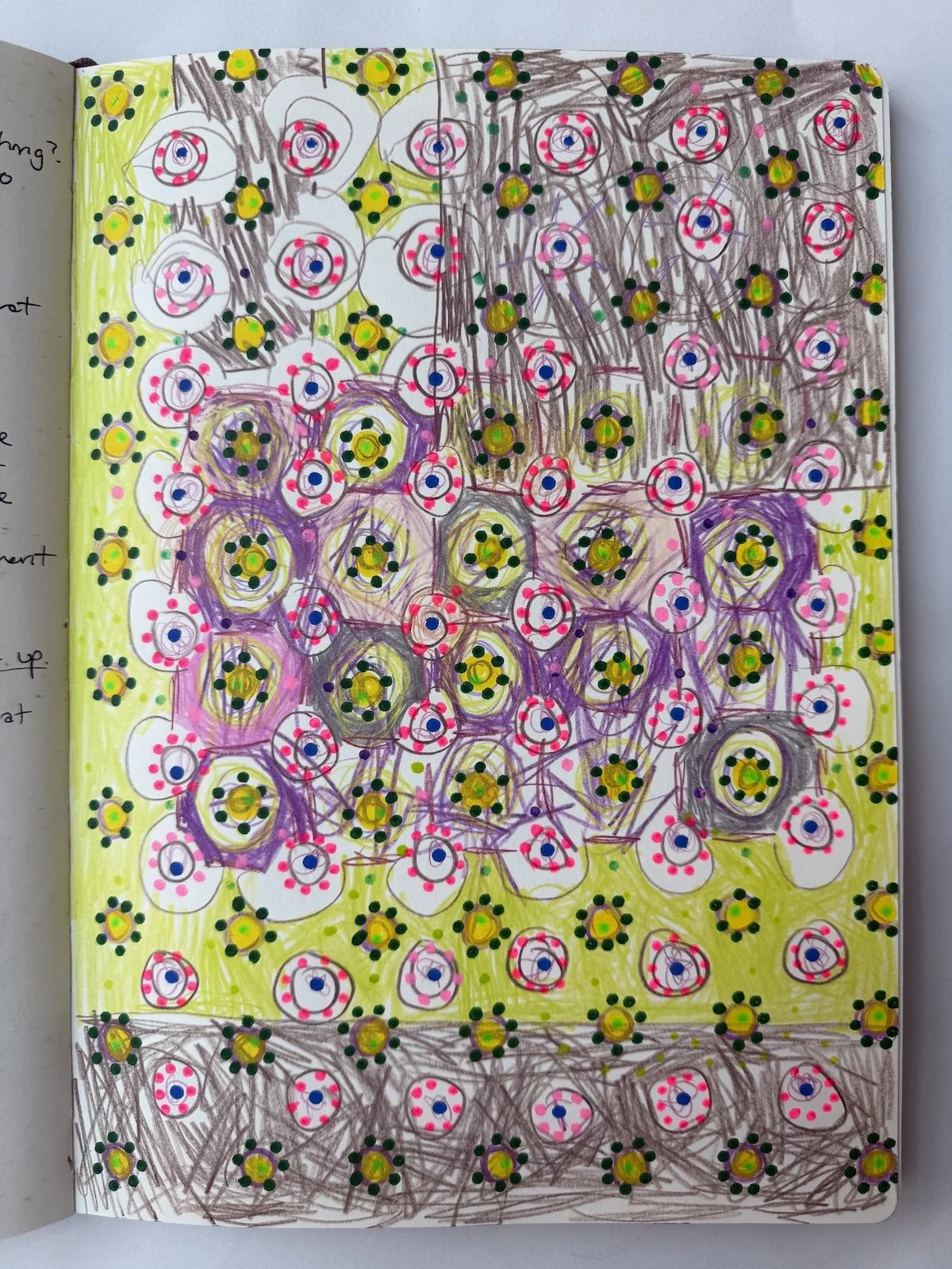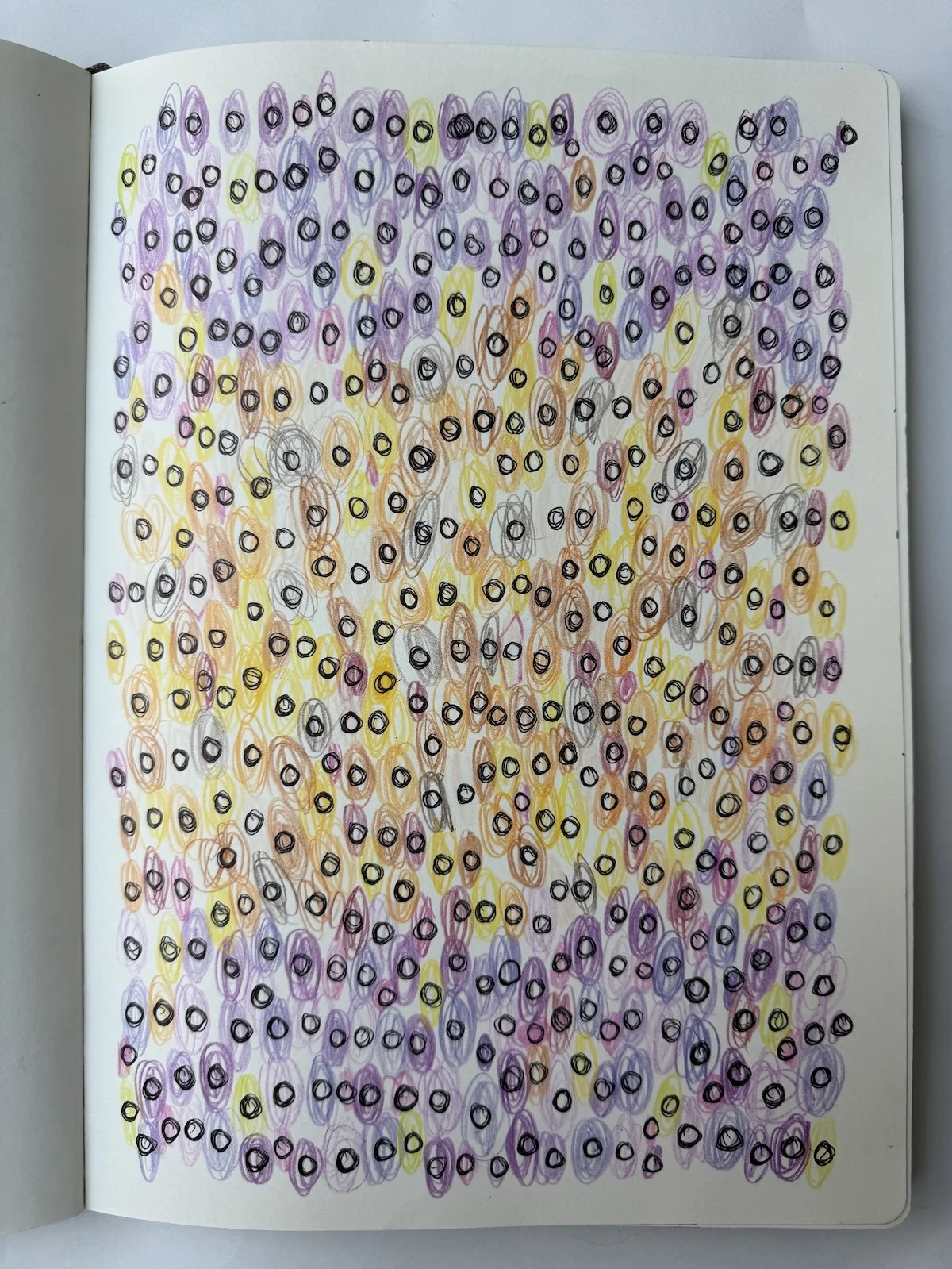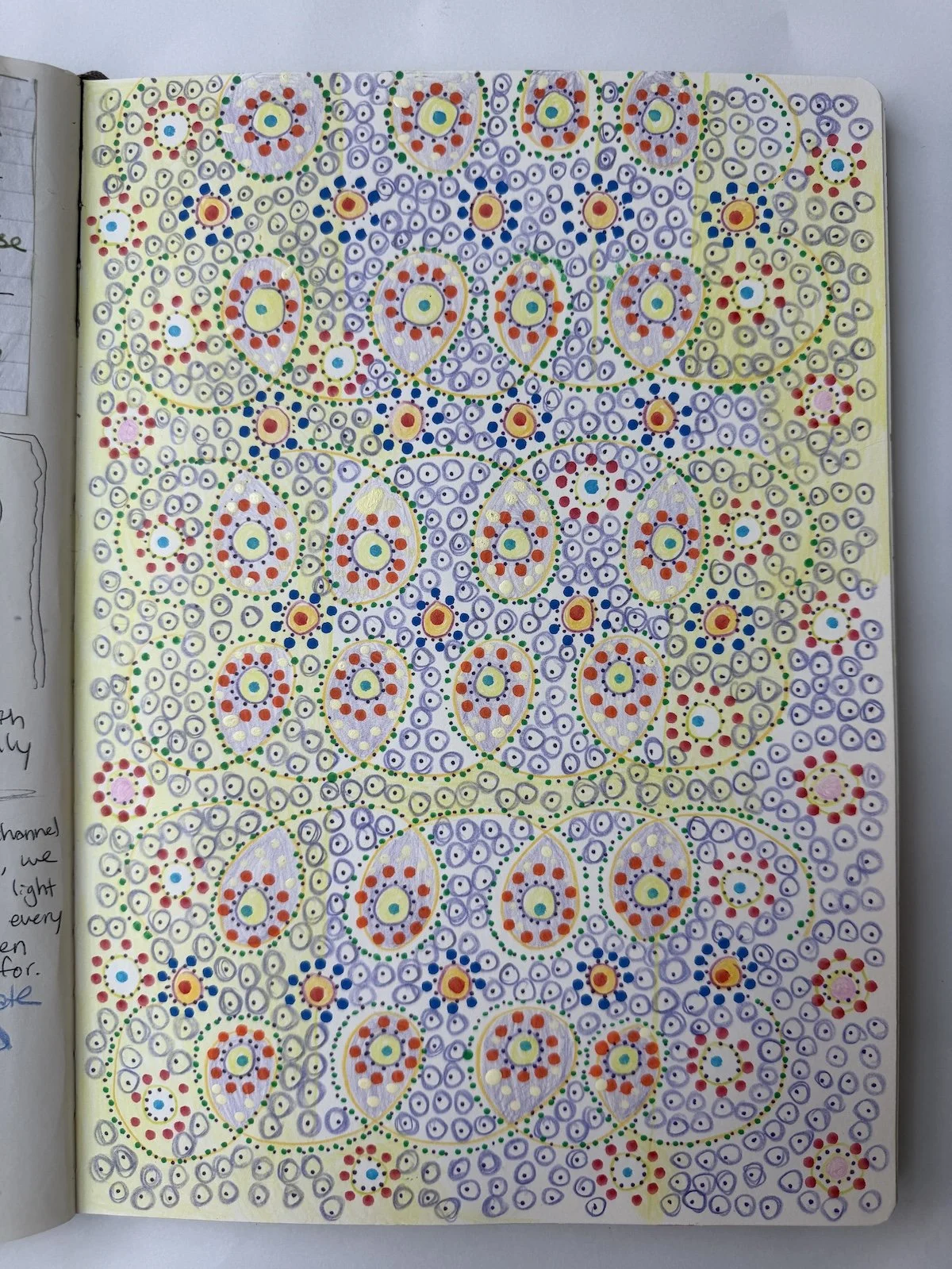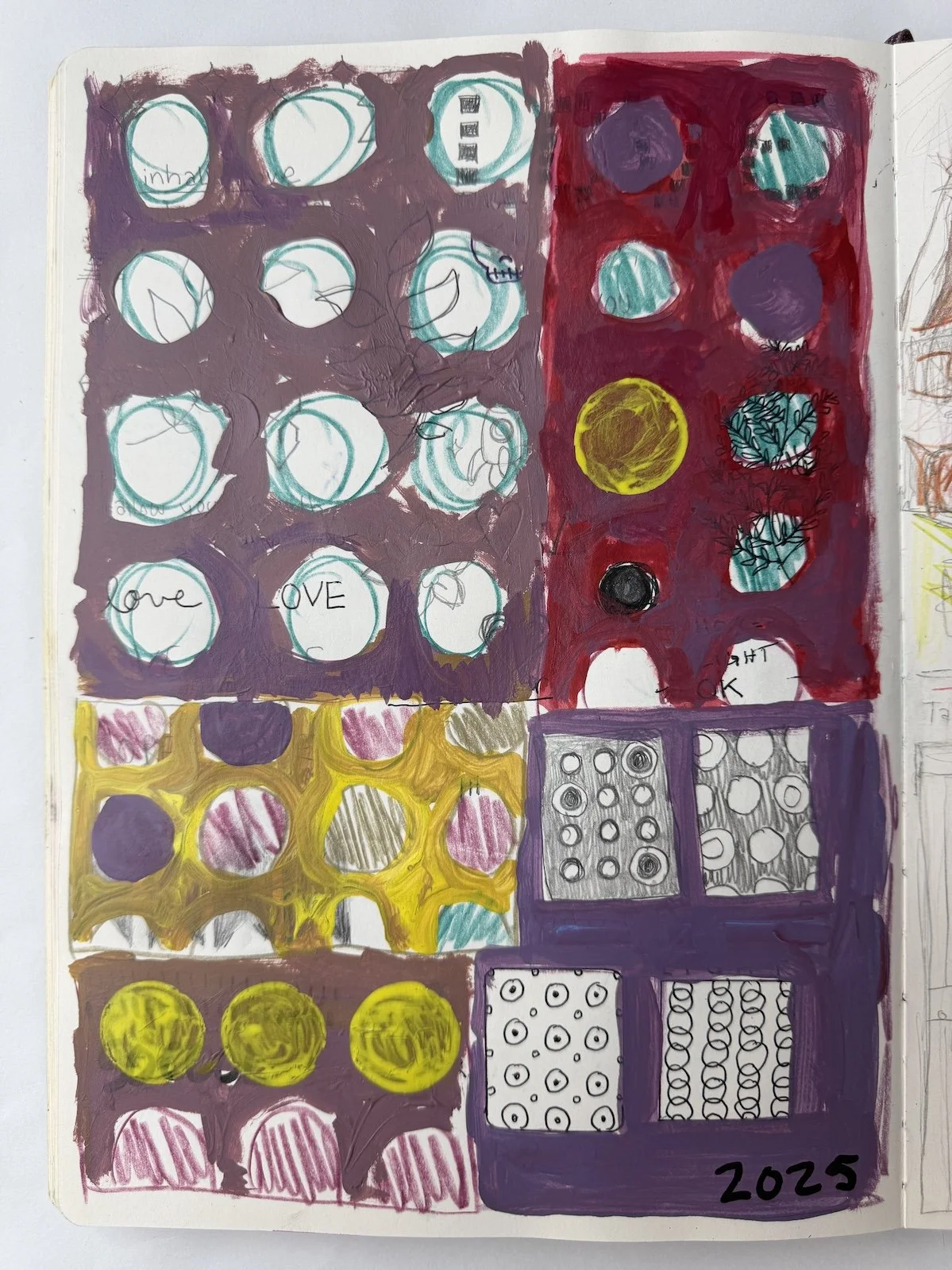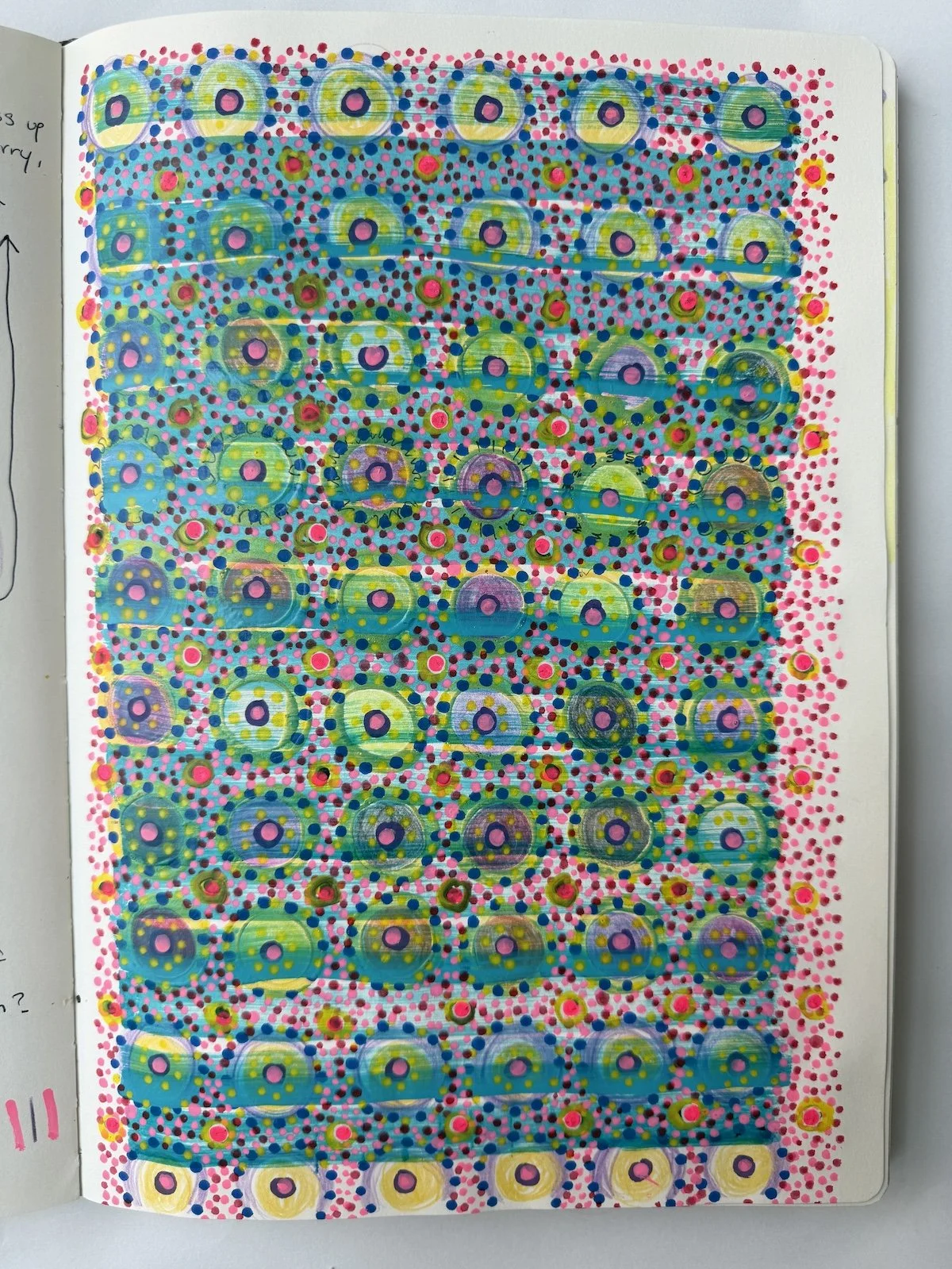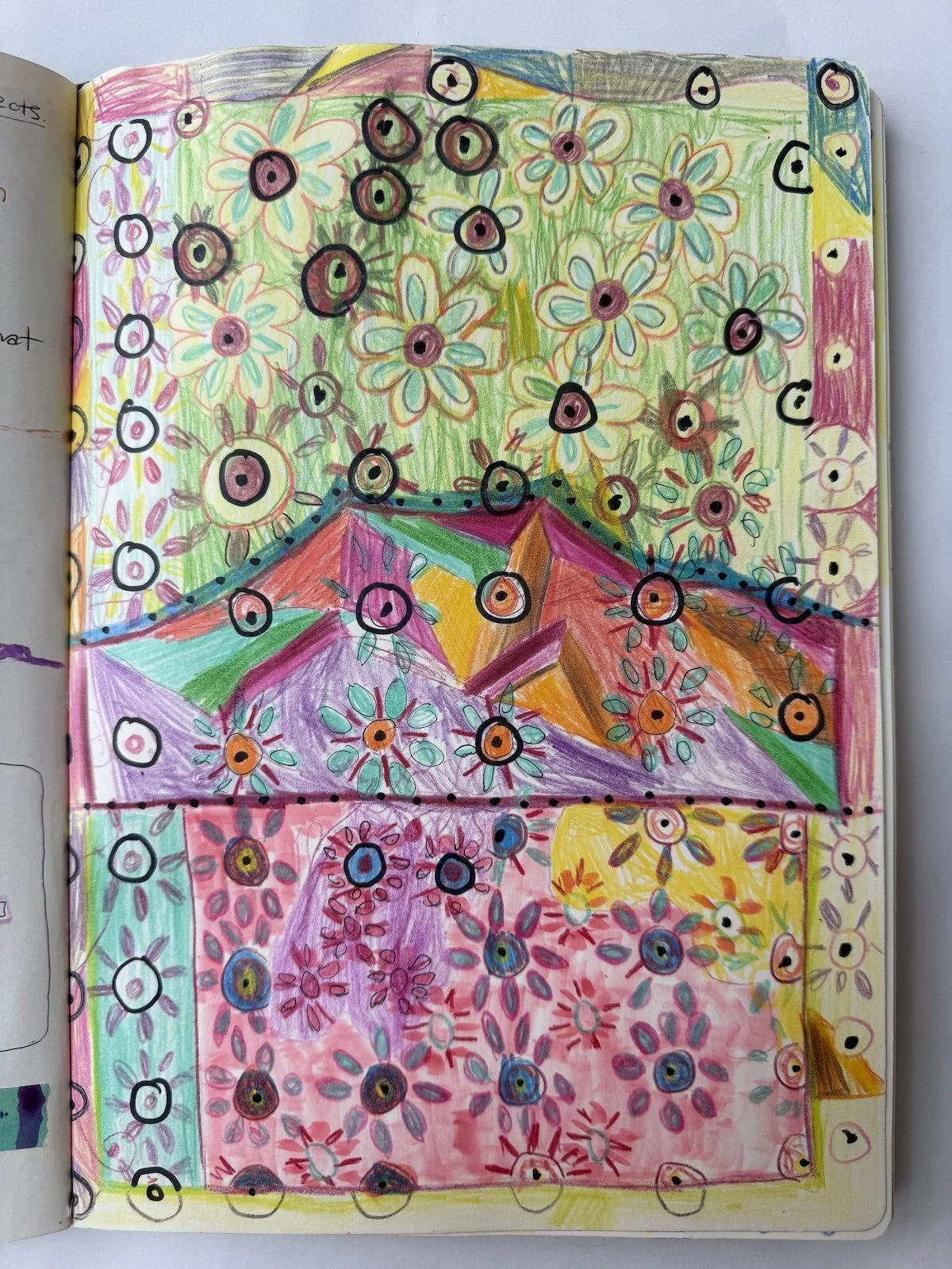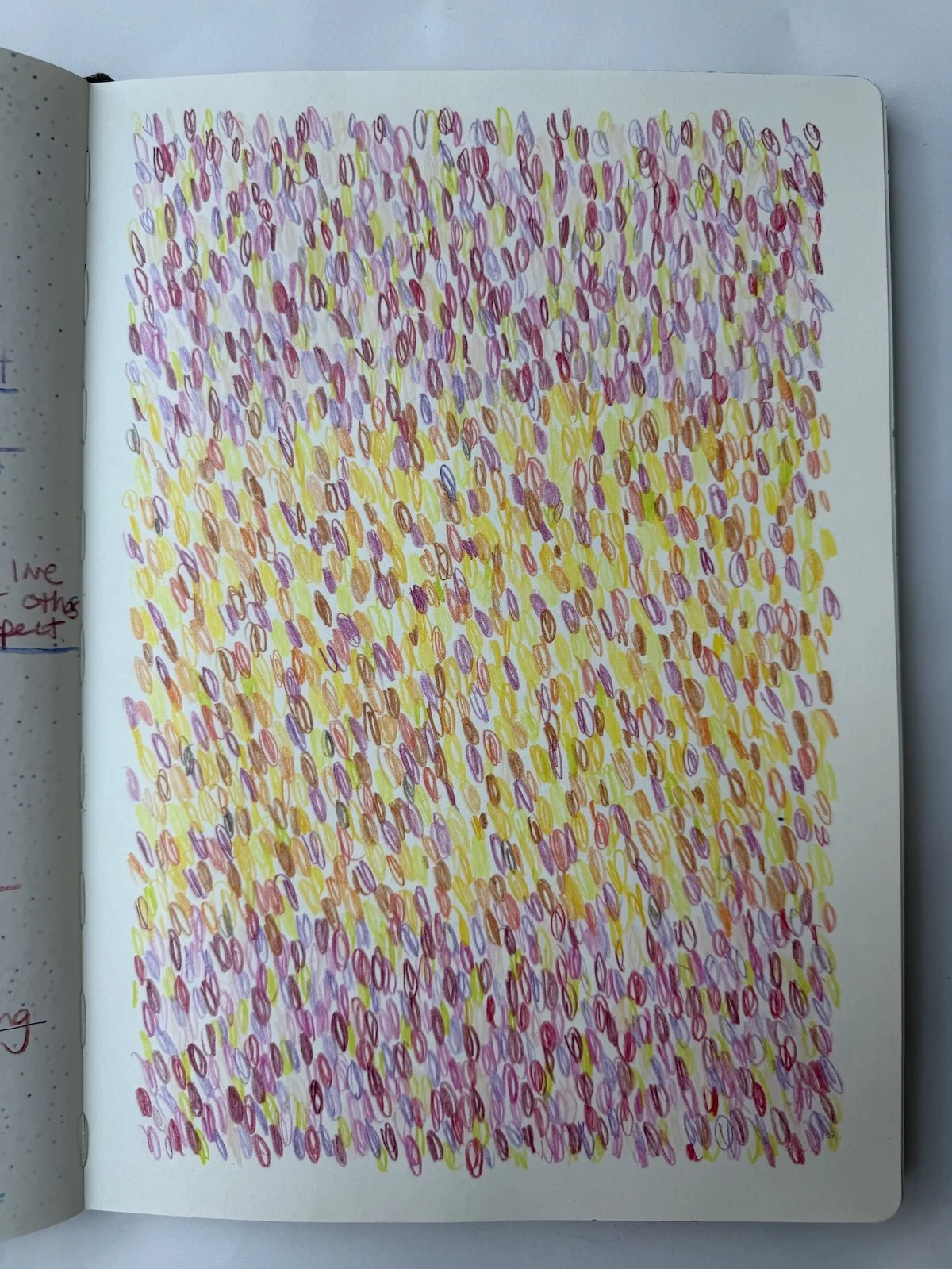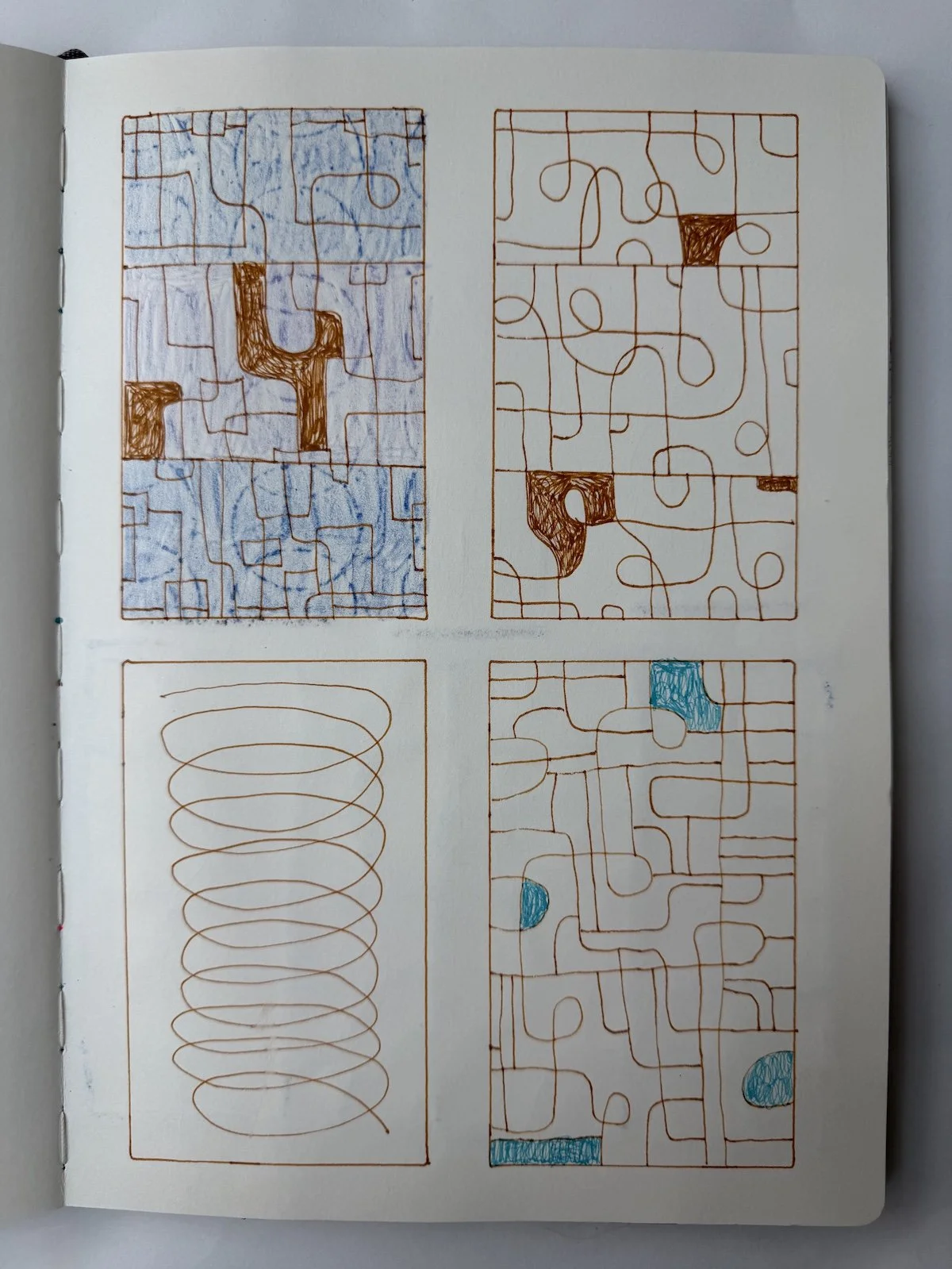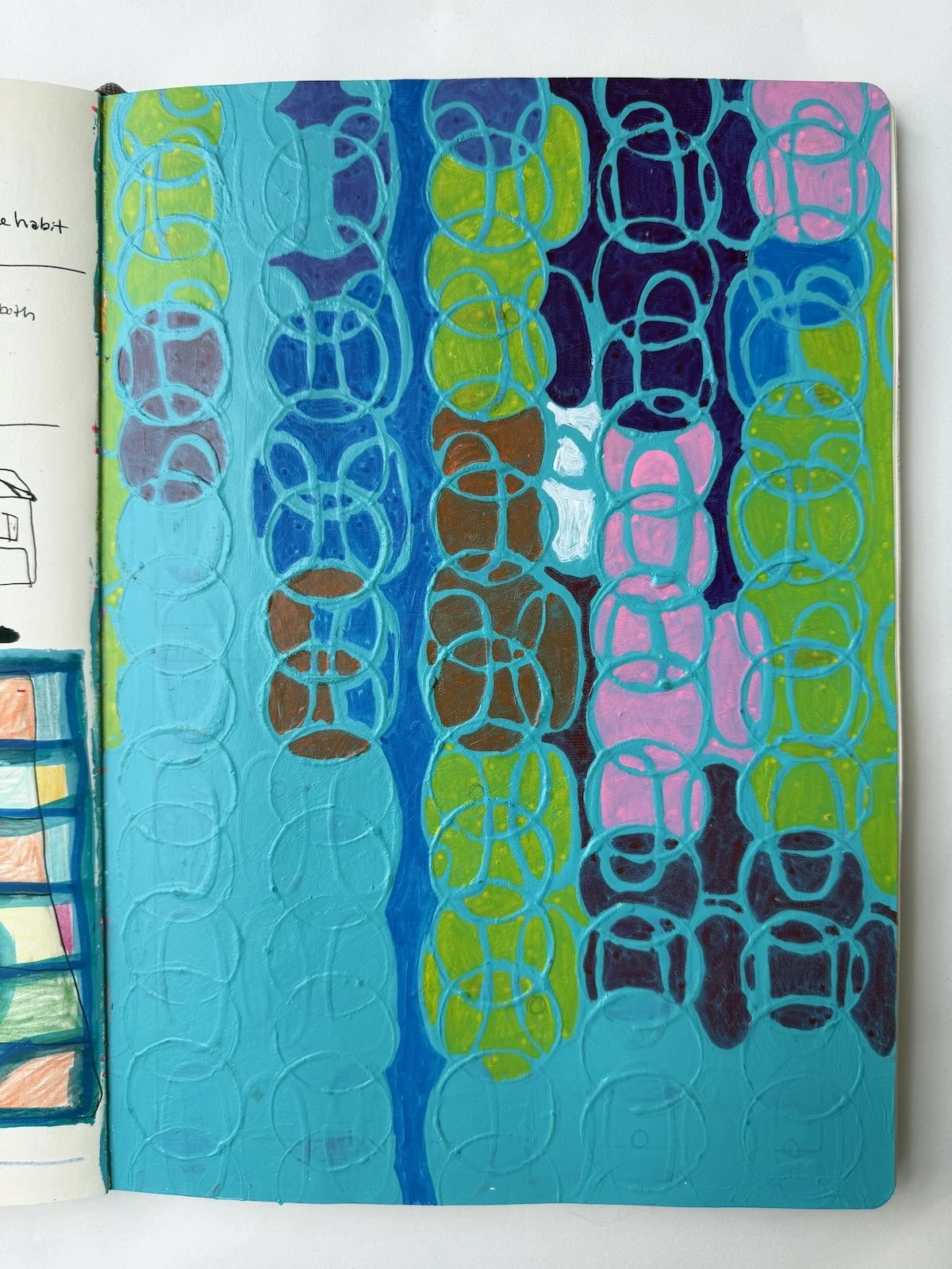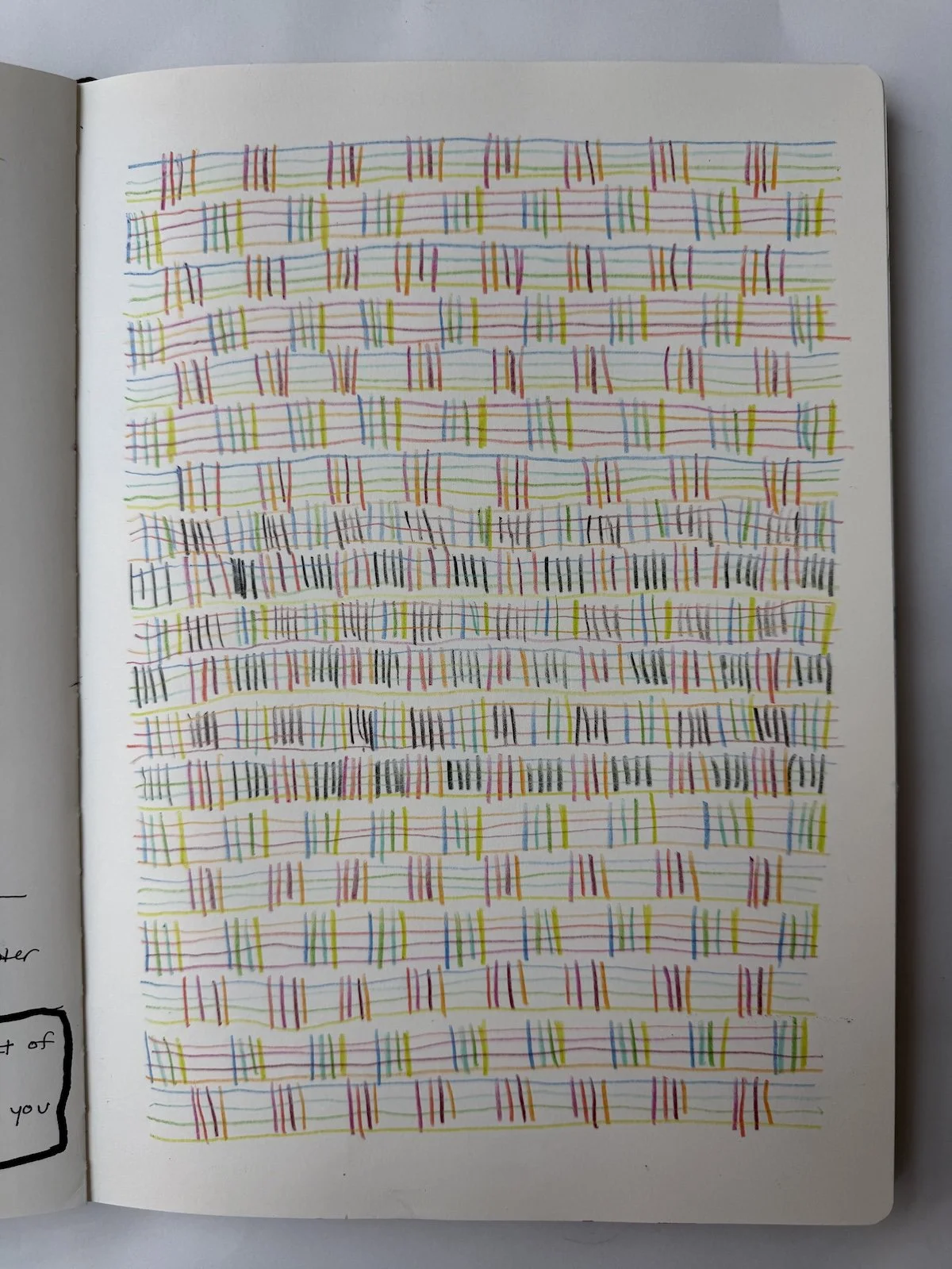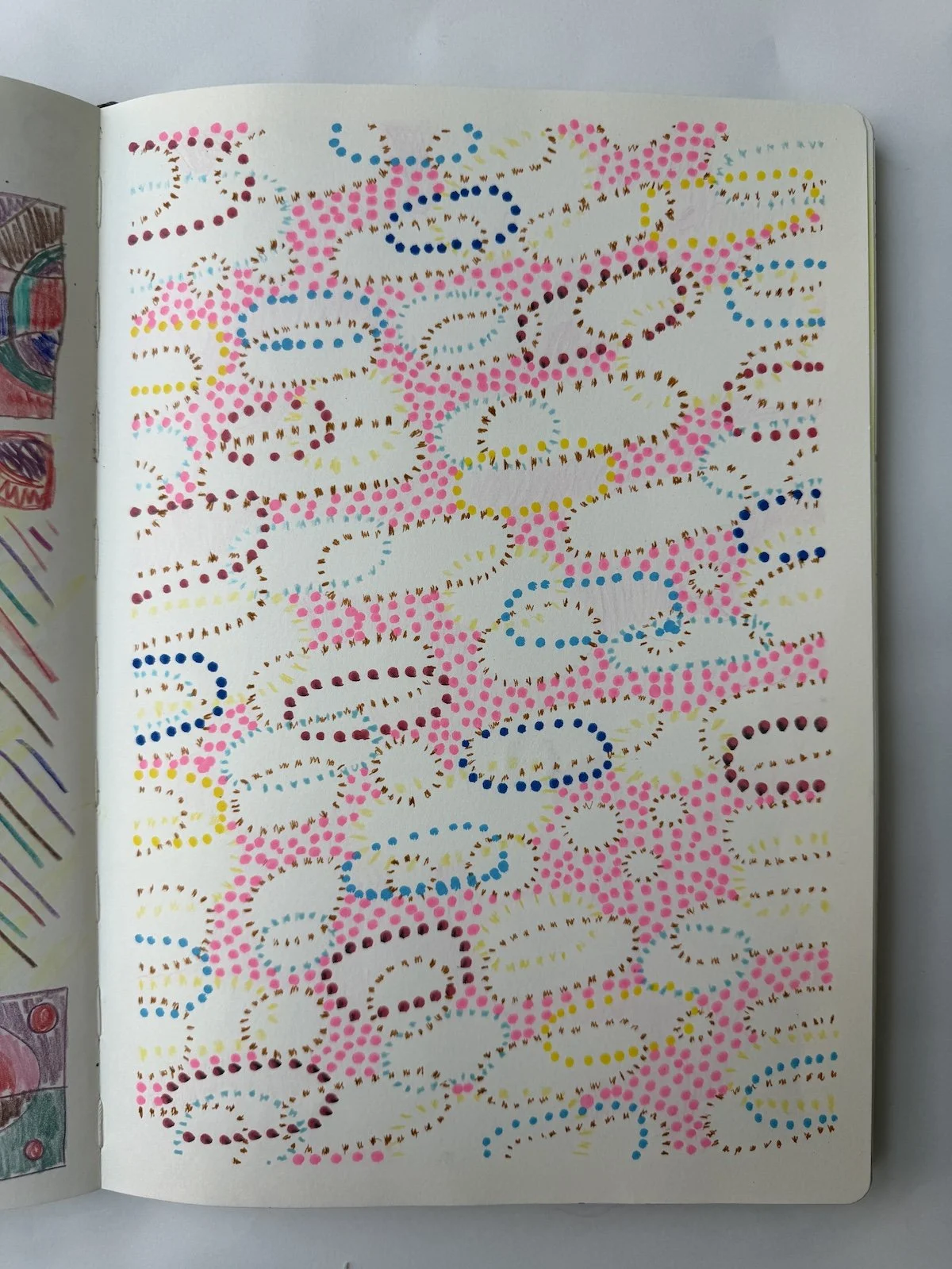On finishing a sketchbook (finally)
I recently finished a sketchbook, and by "finished," I mean that every page has something on it. It's funny to think about applying any kind of finish to the idea of a sketchbook—which is probably why I've never been able to finish one before. Don't get me wrong, I've purchased tons of sketchbooks throughout the years. I've just never finished one. The allure of a fresh sketchbook that will somehow work better, be a better size, or feel better once I implement a better plan always trumped the persistence required to focus on just one.
When I finally finished mine, I was really excited and shared that milestone with other artists. Many admitted they'd never finished a sketchbook either. They all talked about very similar struggles I'd faced, which could often be grouped into one of three questions:
What do I put in it?
When should I reach for it?
Why have one at all?
The Answer Keeps Changing (And That's OK)
It took me about four years to fill this sketchbook, and I have to say—the answer to those questions changed many times. It has to be OK to change your mind. There are too many pages not to.
Initially, I thought about how sketchbooks allow us to make art more conveniently in the world: trains, planes, coffee shops, etc.. The first few pages have observational drawings of plant life, mountains, and wildlife from hikes in the Bay Area, Yosemite, and Palm Springs. I loved taking my sketchbook on these trips and documenting my experiences. It functioned like a journal and a bit of a break from my regular painting practice.
Later, during a period focused on research, I used my sketchbook as a note-taking tool when reading books or watching videos. Over time, those notes transformed into drawings. I'd pull certain words out and play with them on another page—observing their shapes and layering collage over them. That evolution felt natural and became an exciting new way of using my sketchbook.
Convenience is Key
A big thing I learned is that a sketchbook has to be convenient. Towards the end, I felt myself struggling to reach for it, but I saw those final pages and decided to just spend time with them in places I knew I’d be. For me, that meant leaving it open on the kitchen table so I could draw while I ate breakfast, and having it near me while I painted in the studio. I thought about it less like “Sketchbook time” and more like “Breakfast time.. with a sketchbook”. The distinction mattered to me.
Suddenly, sleepy morning colored pencil drawings became a meditation, and the studio drawings felt like a direct extension of whatever painting I was working on that day. I developed this way of working where I'd dry off my paintbrush on sketchbook pages before switching to another color. Those quick gestural paintings—leaning into the limitation of whatever color was left on my brush—started to feel equally as exciting as the paintings I was focusing on with more attention and intention. Those last few pages influenced a new body of larger works on paper using the exact same approach.
Just make the ugly drawings
A sketchbook can be so many things. It's the things you don't expect—the accidental discoveries, the ugly pages, and the detours that allow your work to grow.
What Worked for Me:
Keep it portable. Think about a size you can throw in a backpack.
Create environments where it's convenient to use. Out on the kitchen table, by the couch, in your work bag, etc..
Use it for research, exploration, and play. No plan required. Keep the "ugly" pages and forge ahead when things go in a scary new direction.
Like most things in life, success is found by showing up. With a sketchbook, you just have to do it enough times until the pages run out.

